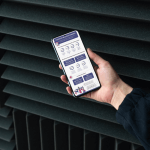Are you looking for ways to enhance your customer’s shopping experience, increase your conversion rates, and improve your scalability? If so, you might want to consider adopting a headless architecture for your online store.
Now, you may be wondering, “What exactly is headless architecture, and how can it benefit my business?” Well, in this blog post, we’ll answer those questions and more. We’ll explain what headless architecture is, why it’s important in e-commerce, and how it can specifically benefit fashion retailers.
So, if you’re ready to take your online store to the next level and stay competitive in today’s ever-evolving digital landscape, keep reading!
The current state of fashion e-commerce
Fashion e-commerce is thriving and evolving rapidly, thanks to a surge in online shopping and the COVID-19 pandemic. Online fashion sales in the UK alone are set to reach £22.2 billion by 2023, up from £14.5 billion in 2019. However, the fashion e-commerce industry faces several challenges, including rising competition, increasing customer expectations, and the need to keep up with the latest trends.
To meet these challenges, fashion e-commerce retailers must continually innovate and evolve their e-commerce architecture. Unfortunately, traditional e-commerce architectures, which rely on monolithic platforms and tightly coupled systems, are no longer sufficient for meeting those needs. To evolve, fashion retailers must adopt a modern e-commerce platform.
That’s where headless architecture comes in.

Want to your questions about Composable Commerce answered?
What is a headless architecture?
Headless architecture is a new and exciting approach to e-commerce that’s gaining popularity in the fashion e-commerce industry. At its core, headless architecture decouples the front-end presentation layer of an e-commerce platform from the back-end services that power it. This means that the front-end can be developed and changed independently of the back-end, allowing fashion e-commerce retailers to be more agile and responsive to changing market needs.
With a headless architecture, retailers can use APIs (Application Programming Interfaces) to connect their front-end presentation layer to a variety of back-end services, such as product information management systems, order management systems, and payment gateways. This enables fashion e-commerce retailers to have more control over their customer experience, and to innovate and iterate more quickly.
Compared to traditional e-commerce architectures, headless architecture is more flexible and scalable, making it an ideal choice for fashion e-commerce retailers who need to keep up with the latest trends and customer expectations. By adopting a headless architecture, fashion e-commerce retailers can stay ahead of the competition and provide a superior customer experience.

So, why is a headless architecture important for fashion e-commerce retailers?
The reasons to move to headless abound, but let’s stick to the top benefits headless can bring to fashion e-retailers.
- Greater flexibility: An architecture with greater flexibility allows retailers to adapt to changing market needs and customer expectations. An e-commerce can easily make changes to its front-end presentation layer, without needing to change their back-end systems.
- Scalability: The flexibility mentioned above allows retailers to grow their business without worrying about outgrowing their e-commerce architecture. This is particularly important for fashion retailers who experience rapid growth. They can continue to provide a high-quality customer experience, even as they expand.
- Customer-centric approach: By using APIs to connect their storefront to a variety of back-end services, any retailer can offer personalized, relevant, and engaging experiences to their customers. This can help increase customer satisfaction, loyalty, and ultimately, sales.
- Competitive advantage: Stay ahead of the competition with a superior customer experience. This is particularly important in a highly competitive and fast moving inddustry like fashion.
- Innovation and experimentation: With a headless architecture, fashion e-commerce retailers can experiment with new front-end experiences and technologies, without needing to worry about the impact on their back-end systems. This allows fashion e-commerce retailers to innovate and experiment more freely, and to stay ahead of the curve in terms of customer experience.
- Modular approach: Headless architecture allows retailers to take a modular approach to e-commerce development. This means that they can build and deploy new features more quickly and efficiently, without needing to change their entire e-commerce architecture.
So, are you convinced yet? If you are, get in touch to discuss how you can implement headless commerce efficiently. If you’re not yet, check out one of our client case studies below. The results speak for themselves.

Front-Commerce has become the foundation of our e-commerce platform allowing it to evolve gradually while controlling our costs.
– Nicolas Ciccione, Director of E-business, Kaporal
Discover the Case study
